Capital Markets report: Three business leaders on the Government's wealthy investor proposals (NZ Herald)
Anna Kominik
Wisk’s Asia-Pacific regional director Anna Kominik leads a multinational team bringing the world’s first all-electric, self-flying air taxi to market.
On the government’s recent announcement about changes to immigration policy she says anything that supports greater investment in New Zealand is useful.
“But we need to do more to amplify New Zealand’s capability and capacity to scale businesses,” she says.
Kominik says we also need people, like current and former chief technical officers and chief operating officers — those people not just with the funds, but also the skills and experience in growing companies and taking them global.
“We need to be really ambitious for the start-ups that have been nurtured over the past decade and who are ready and wanting to take on the world.”
While the announcement came with little detail, Kominik says rather than letting in random high net worth individuals, we must identify the gaps in the New Zealand companies that are scaling fast and/or who need the capital most acutely along with the ability to have the biggest impact both economically and socially.
“This is the perfect time to be focused on building high-value jobs,” she says. “But our Covid advantage won’t last for long and we need to seize it more aggressively.”
Kominik says we need an overarching strategy for how we are planning to grow our trending industries, including digital, creative, gaming, medtech, food and aerospace.
“These are industries that are growing quickly in New Zealand and have the potential to deliver high quality returns — both socially and economically.
“It would be good to see how this scheme was feeding into supporting these sectors and companies to scale up and become even more ambitious.”
At the Auckland’s Future, Now Summit held earlier this month, Kominik told attendees that she is aware of companies with amazing technologies that would love to come to New Zealand right now.
“They want to do due diligence, they want to come through the border.”
She says New Zealand has the opportunity to define what our vision is and attract companies that support it to come and locate themselves here.
“These are billion-dollar companies already that are going to create high-value jobs,” she says. “We could take any kid who likes an engine, and we could turn them into an electric aircraft maintenance engineer — it’s a very, very high-value job right now.”
Early last year, the NZ Government signed a memorandum of understanding with Wisk to support a world-first passenger transport trial of its air taxi.
At the time of the announcement, Kominik said: “New Zealand’s focus on decarbonising its economy as part of the electric transport evolution directly aligns with Wisk’s mission to deliver safe, everyday flight for everyone through effective, accessible and sustainable urban air mobility solutions.”
Caroline Rainsford
Country Director for Google New Zealand, Caroline Rainsford, is pleased to see the Government’s announcement to support targeted, high-quality investment in New Zealand.
“This will lead us in a positive direction toward bringing skills and new technology here,” she says.
Rainsford says the targeted investment, coupled with the investment of $44 million to support small businesses through the extension of the Digital Boost Training Programme announced in the Budget — which Google has pledged to support — is critical to ensure the benefits of the growing digital economy are shared widely and equitably.
The Government says the programme will provide up to 60,000 small businesses with digital skills training to aid in “the transition to future ways of working”.
Speaking at the Auckland’s Future, Now Summit earlier this month, Rainsford said she has always believed in the role of digital transformation to support Auckland’s economy — but more so now than ever, and what is important is the uptake of skills.
“We can have all this technology and we can invest in ICT infrastructure in New Zealand, but if we don’t have the digital skills and capability, we can’t realise the benefit of it.”
She says whilst we are not doing a bad job in Auckland of embracing some of these, there is so much more opportunity.
“Every day I get first-hand experience of seeing businesses in New Zealand that over the last year have grappled with the impacts of Covid,” she says.
“I have seen companies embracing technology to reach customers digitally online both here in New Zealand and overseas. I have seen people using AI to really sort out the impacts on supply chain during Covid — but we need to do so much more.”
A report commissioned by Google New Zealand that was released last month calculates that if leveraged fully in the economy, digital technologies could create an annual economic value of $46.6 billion by 2030.
“To put this in perspective, this is equivalent to about 14 per cent of New Zealand’s GDP, or the combined GDP supported by Canterbury and Hawke’s Bay,” it says.
To fully capture the digital economy, the report has identified three main pillars of action the country could take.
This includes supporting the adoption of technologies in key industries, digitally upskilling the current workforce and future talent, as well as promoting digital export opportunities.
Across these areas, Google says it has made significant contributions in advancing New Zealand’s digital transformation journey.
This includes supporting the development of digital skills through programmes like the Google Certification Programme, Digital Fluency Intensive for teachers, and its partnership with Spark to run workshops to support New Zealand businesses in using digital tools by delivering digital skills training for small and medium-sized enterprises (SMEs) at no cost.
Rob Fyfe
The Government has foreshadowed opening the door to some 200 foreign investors through a reset of its immigration settings.
The announcement, made earlier this month by Tourism Minister Stuart Nash, was described by the government as a “once-in-a-generation reset” of the immigration system.
As part of the announcement, Nash — standing in for Immigration Minister Kris Faafoi — said new border exemptions would allow those representing high-value international investment interests to come to New Zealand over the next 12 months to conduct due diligence and transact the sort of deals that will play an important role in supporting New Zealand’s economic recovery from Covid-19.
“We want targeted, high-quality investment that establishes frontier firms, brings skills and technology to New Zealand,” he said.
“We have also created border exceptions for the Innovative Partnerships Programme and New Zealand Trade and Enterprise’s Investor Programme to enable representatives from global companies to come to New Zealand to conduct on-the-ground negotiations with companies that they wish to invest in.”
In making the announcement, Nash said the investment through these programmes will create highly-skilled jobs, enable the valuable transfer of knowledge and technology, and increase international connectivity for New Zealand firms as they allow us to position ourselves globally.
Rob Fyfe, who has been working as business liaison for the government, says he has been highlighting this opportunity since July last year, and the announcement took longer to arrive than he had hoped for.
“In the intervening period, some of the comparative advantage that existed in the back half of 2020 that was motivating interest in New Zealand as a significant destination for investment has probably dissipated,” he says.
That said, he says the opportunity is still significant and New Zealand continues to be an attractive destination for international investment.
“In principle I am encouraged by the announcement.
“As to whether 200 is enough — I have got no idea — a heck of a lot could be achieved by allowing 200 pre-qualified, validated investors into the country.
“I would hope if we exhaust that quota, because there is so much demand and opportunity, the Government would extend the quota.”
There is still little detail so far in the announcement, but Fyfe says it is important we move at speed to get the pipeline flowing.
He says we should be prioritising investment that stimulates either demand or supply of high value jobs in the economy and/or investment in technologies and capabilities that will enhance our global competitiveness and the advancement of our green economy and sustainability ambitions.
Competition, IP, and confidentiality issues mean that officials will need to be the decision-making authority to determine which investment interests are allowed to proceed, but Fyfe hopes they will consult with business leaders and academics to identify areas of focus and opportunities.
But he notes that any international investment needs to be supported by domestic investment in education and skills, and skilled migration to ensure we can provide the workforce to support inbound investment and the relocation of high-value businesses to New Zealand.
Green Building: Interview with Minister James Shaw (NZ Herald)
Green Building: Interview with Minister James Shaw (NZ Herald)
“When the Climate Change Commission released its draft advice in January 1, I said that I had never felt more confident that a climate-friendly, prosperous future for New Zealand was within reach,” says James Shaw. “But that will only possible if we take action to cut emissions right across the economy — including buildings.
“Right now, our homes and buildings are currently responsible for around 20 per cent of New Zealand’s carbon footprint.
“Emissions from the construction sector have increased by two thirds over the past decade. If we continue on this path and don’t change the way we build, the risk is that we lock in higher emissions for decades to come. That will only make it harder to meet our emission reduction targets and take us further away from fulfilling our commitment to future generations that we will pass on a cleaner, more stable, and less polluted planet.
“So what we need to be doing is rethinking the way we design, build and use our homes and workplaces so they have a positive impact on our climate and natural environment.
“Our Government has made a great start on this. For example, we are making sure all new Kāinga Ora public homes are energy efficient.
“We have also launched the Building for Climate Change programme to improve how we build while reducing carbon emissions.
“As my colleague the Minister for Building and Construction, Poto Williams, said in her piece for this business report, the change “envisaged by the programme is significant.” But it’s not only climate outcomes: the programme will also improve the energy efficiency of housing, meaning lower electricity bills, warmer, drier and better ventilated homes, and improved health outcomes for New Zealanders.”
The Herald asked Shaw, What is your vision for new builds?
Shaw: I think most people around the country want to know that their homes, and the places they work and spend time in at the weekends are part of the solution to climate change. Put simply, that’s my vision. I want people all over Aotearoa living, going to work, or socialising with friends in highly energy-efficient buildings powered by clean energy.
Changing the way we build to be more climate-friendly will be a huge part of this, but the truth is, most of the buildings that will be in place in 2050 — the date by which Aotearoa will need to be net-zero carbon — have already been built. So we also need to be thinking about how we reduce emissions from existing buildings.
In their draft advice the Climate Change Commission said that we need to improve the energy efficiency of buildings, alongside decarbonising the energy used for heating, hot water and cooking.
Once the Commission’s final advice is released at the end of May we will start work on an Emissions Reduction Plan setting out how we intend to meet our targets. That plan will need to cover every part of the economy — including, but not limited to, new and existing buildings.
Herald: What do you see as the biggest challenge for the industry to transform the built environment?
Shaw: I might not be the best person to explain the challenges of cutting emissions from buildings. What I’d most like is for the industry to share those challenges with us so that we can look at possible solutions.
I would imagine though that one of the main challenges is integrating low-carbon design principles right from the start. In other words, getting the engineering, technology, and design experts around the table right from the start.
Building emissions are primarily due to heating, cooling, and lighting, though the embodied emissions in materials are also significant. Decisions about all of these aspects of a building tend to be made fairly early in the process. If they could be made from the point of view of thinking about what can be done to reduce emissions, then that would make a huge difference. The Building and Climate Change Programme that I mentioned earlier will help with this, as it does set targets for new buildings to reduce embodied and operational emissions.
Herald: Building companies, real estate firms and others in the industry have urged the Government to speed up action on fulfilling its pledge on environmental standards in government buildings. Why are you not moving faster?
Shaw: The first thing to say is that I welcome the fact the building and construction sector want us to speed up action. It’s a positive sign of the part the sector sees itself playing in helping to meet our climate change targets.
There is no question that Aotearoa New Zealand’s future is low carbon. How quickly we get there will, of course, depend a great deal on the decisions we take over the next few years. And so if the sector does want us to move more quickly, I would encourage them to keep demanding more of us,
particularly as we start to think about what goes in the Emissions Reduction Plan. I would also encourage the sector to share their journey with New Zealanders more broadly so that everyone can see just how important this sector is to the future of Aotearoa New Zealand.
But that’s not all. The sector can also go further themselves. As I have said, the low carbon direction we are heading in is clear. And so, there is much the sector can do to generate new ideas, set industry ambition, and establish New Zealand’s building and construction sector as a global leader.
The Government does have a role to play in this and can lead by example.
As part of the recent commitment we made to require the public sector to achieve carbon neutrality by 2025, a new energy efficiency rating standard is being applied to government offices. Work is also under way on reducing embodied carbon in Government buildings and I have been leading an initiative to transition schools and hospitals up and down the country to clean energy. By making these changes we can harness the power of government procurement to lead by example and create opportunities for new skills and technologies to emerge.
Herald: Finally, what role do you hope the Government’s Emissions Reduction Plan will have in decarbonising buildings?
Shaw: The building and construction sector can, and should, play a key role in helping create a low carbon future for Aotearoa New Zealand.
Draft advice from the Independent Climate Change Commission says the same. In their report they identified some of the opportunities in this area, particularly around energy efficiency and construction materials.
Action to reduce emissions from all buildings will form a key part of the Emissions Reduction Plan which will be published later this year, after the Commission publishes its final advice.
Getting the Emission Reduction Plan right will be crucial. It is going to determine the direction of climate change policy for at least the next 15 years, so I would encourage the building and construction sector to input to that process.
Opinion: Covid-19 provides impetus for fundamental change (NZ Herald)
Opinion: Covid-19 provides impetus for fundamental change (NZ Herald)
It has been three years since Prime Minister Jacinda Ardern called climate change “my generation’s nuclear-free moment”.
While the previous Government was unable to declare a climate emergency in the last term — believed to be because Labour’s coalition partner New Zealand First blocked it — she has now made it a priority with a declaration of a climate emergency.
Since Covid swept the world, it has done a lot to emphasise the social and economic inequalities that exist globally. The harsh reality of the lockdown exposed that, even in New Zealand, women and low wage workers were most impacted by job losses and reduced work hours.
Similarly, the relationship between climate change and inequality will see those who are disadvantaged suffer disproportionately from the adverse effects of global warming. The need for action to achieve New Zealand’s vision of a thriving, climate-resilient, low emissions future is widely understood.
The same areas that New Zealand used to successfully respond to the Covid-19 outbreak are needed to address global warming: listening to scientists, public policy and international co-operation.
When US President-elect Joe Biden spoke with Ardern for the first time since the US election last month, he spoke positively about her handling of the pandemic and said he looks forward to working closely with her on common challenges, including tackling climate change. Biden has named ex-US Secretary of State John Kerry — one of the leading architects of the Paris climate agreement — as his climate envoy.
“America will soon have a government that treats the climate crisis as the urgent national security threat it is,” said Kerry.
This break from the Trump administration’s climate policy will put our Government to the test, and necessitate that our ambition reflects our action.
Speaking recently at the Institute of Financial Professionals in New Zealand (Infinz) conference, Climate Change Commission chair Dr Rod Carr said the commission’s current programme of work is to produce the first emissions budget out to 2035 — and to the extent that we are not on track to achieve our domestic targets and global obligations, advise on a reduction plan that will reduce those emissions having regard to a wide range of impacts.
“It is important to understand that climate action is now mainstream conversation, and understand what is to be done, by who, and by when,” he said.
New Zealand emits about 80 million tonnes of carbon dioxide-equivalent greenhouse gases every year, and under the international accounting rules sequesters about 10 million tonnes, largely through forestry. Nearly half of those emissions come from agriculture.
The challenge for New Zealand, says Carr, will be that although our form of pastoral agriculture may be one of the most efficient ways of producing meat and milk protein in pastoral agriculture, there may now and in the future be ways of producing meat and milk proteins with an even smaller greenhouse gas footprint.
Of the remainder of our greenhouse gas emissions, transport makes up about 40 per cent. It is a growing contributor, with household transport emissions increasing by 15 per cent between 2011 and 2017.
Carr says this will be one of the major challenges that will go to the heart of both the allocation of capital by private vehicle owners, fleet operators and government infrastructure providers.
“Converting ground transportation to low or no emissions is a 100 plus billion-dollar investment challenge over the next 30 years,” he says. “Known technologies exist. They largely require electrification, and that electrification needs to be provided from renewable energy sources, unless it is to continue to contribute to greenhouse gas emissions.”
Navigating our economic recovery from Covid-19, while finding solutions for our climate change challenges will require a substantial and coordinated response. This will mean making sure capital is deployed to support the new age, new technologies, and new and necessary ways in which we conduct business.
Covid-19 exposed major weaknesses in our society. But it has also given us the impetus to make fundamental changes that will address inequality and fuel an economic recovery that is long-lasting and sustainable. Without a handbrake on the Government — and with a renewed impetus from international leadership to deliver — now is the time to make sure New Zealand isn’t left behind.

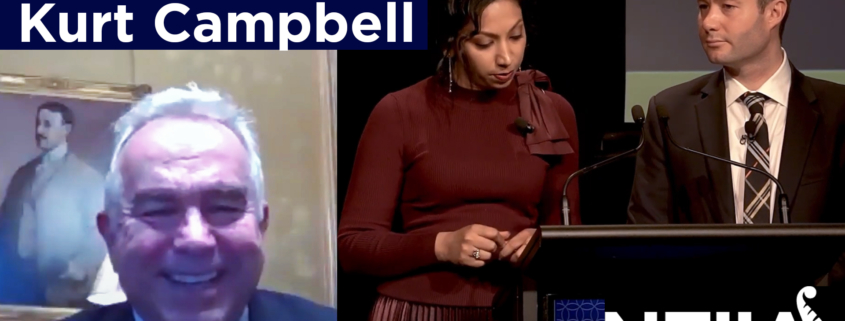
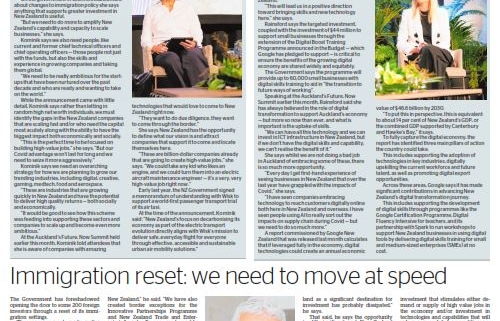
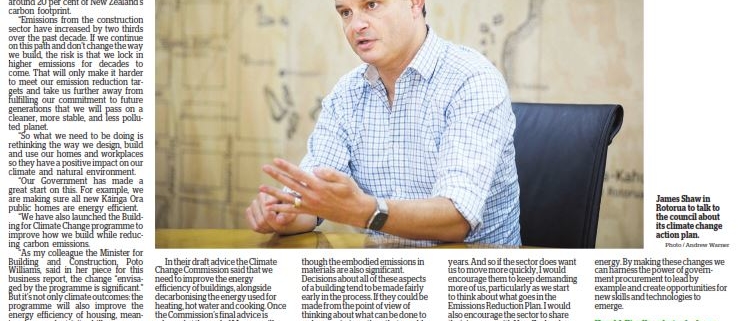
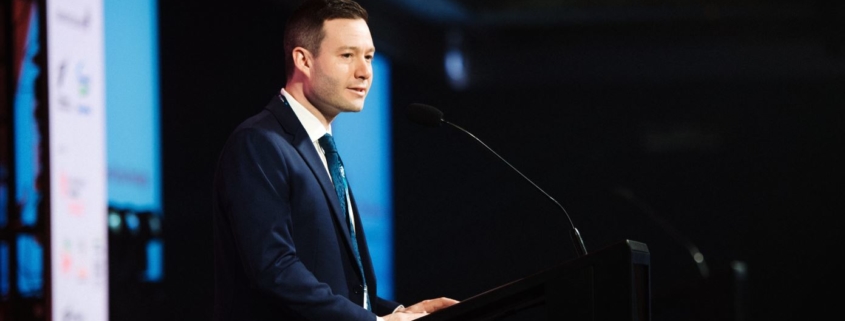
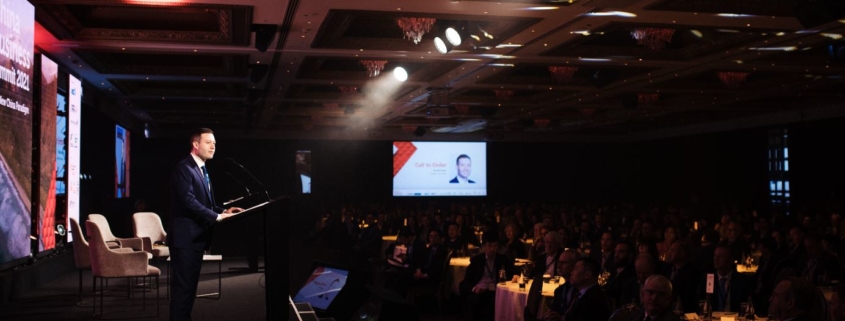
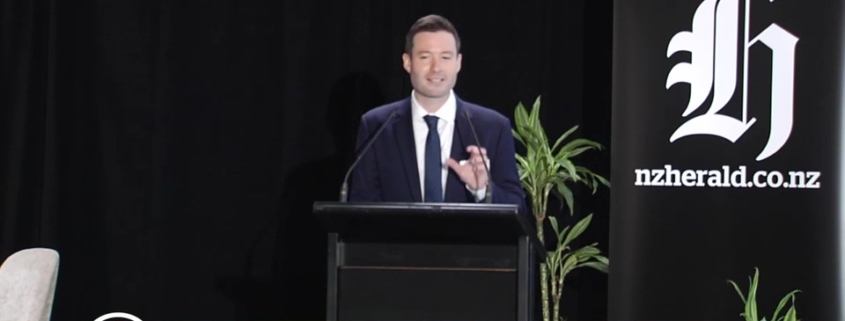
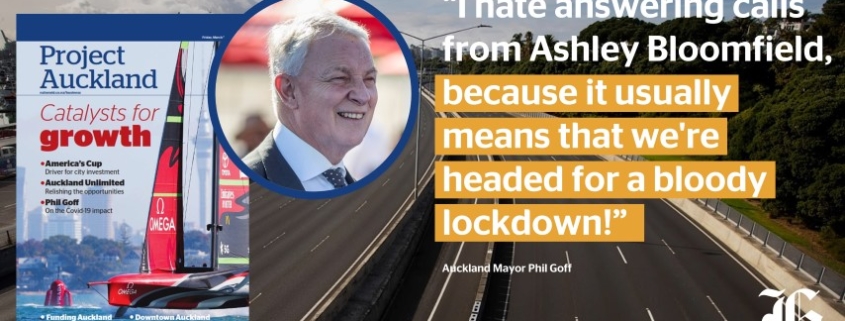
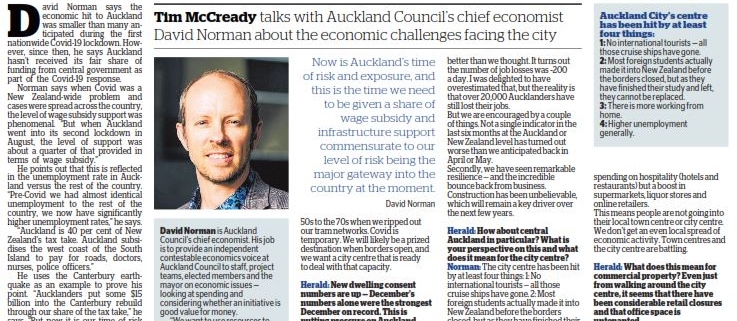
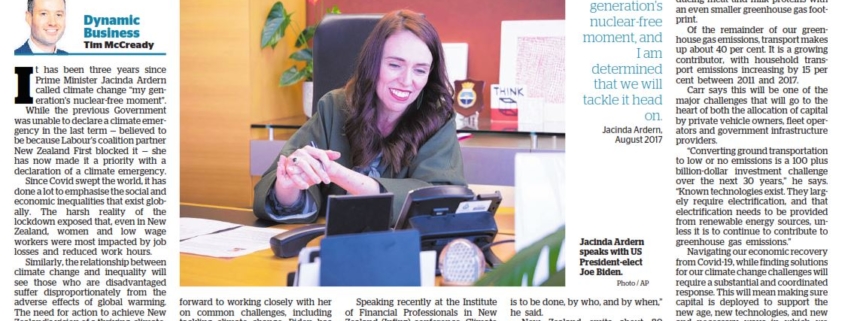
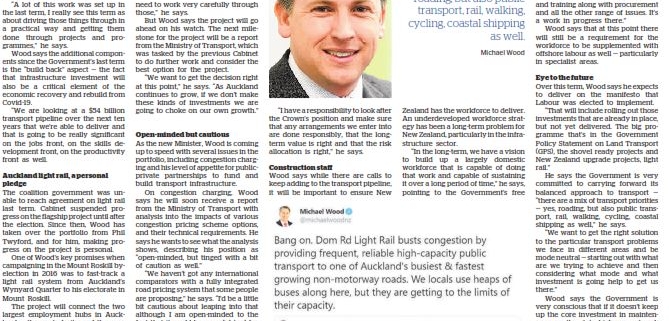
Address and interview with Kurt Campbell, White House Coordinator for the Indo-Pacific, at the New Zealand Institute of International Affairs 2021 conference, ‘Standing in the Future: New Zealand and the Indo-Pacific region’ with co-hosts Tim McCready and Ziena Jalil.